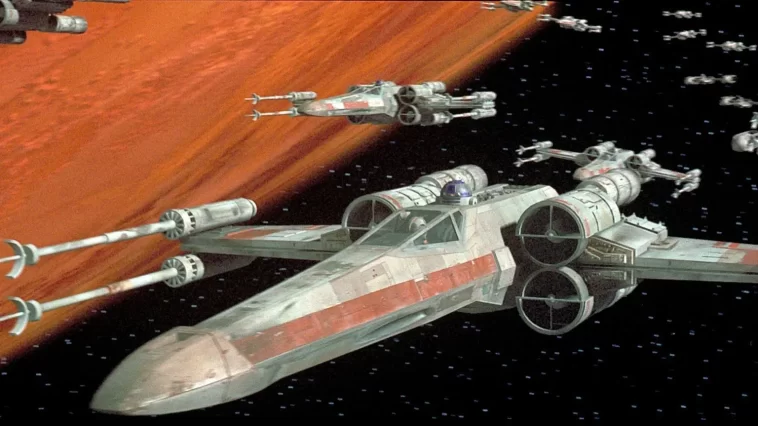The Star Wars galaxy is vast, filled with mysteries, legends, and unanswered questions that fans have debated for decades. One of the most fascinating unresolved topics involves the lush planet of Naboo—homeworld of both the beloved Queen Padmé Amidala and the infamous Emperor Palpatine. Now, with Shawn Levy’s upcoming film Starfighter starring Ryan Gosling, there’s growing speculation that this long-awaited mystery may finally be addressed.
A Return to Naboo?
According to recent reports, Starfighter will be partially filmed in the Mediterranean Sea, a location previously used to represent Naboo in George Lucas’ prequels. That detail alone has sparked excitement, as fans wonder if the story will once again bring us back to Naboo, this time during the Sequel Trilogy era, about five years after the events of The Rise of Skywalker.
If so, this opens the door to answering a question that has lingered for more than 20 years: How did the people of Naboo truly feel about Palpatine’s rise to power and his legacy as Emperor?
Naboo’s Complicated Relationship With Palpatine
On the surface, one would expect Naboo’s citizens to despise Palpatine. After all, their cherished queen, Padmé Amidala, gave her life trying to stop his manipulation of the Senate and his transformation of the Republic into the Empire. Furthermore, Palpatine himself showed little loyalty to Naboo, eventually initiating Operation: Cinder, a destructive Imperial contingency plan that nearly rendered the planet uninhabitable.
And yet, Naboo’s history is full of contradictions. During Palpatine’s reign, the planet actually prospered economically and politically. This prosperity created a paradox: while Palpatine had little personal affection for his homeworld, many average citizens may have lived comfortably under his rule. Much like in real-world politics, everyday people often ignore larger injustices as long as their own lives remain stable.
What We’ve Seen in Canon
So far, Star Wars canon has only provided small glimpses of Naboo’s fate after the prequels:
- In Andor, Rebel attacks by Luthen Rael hinted at dissent on Naboo, though not widespread rebellion.
- In Return of the Jedi (Special Edition), we see Naboo’s residents celebrating the fall of the Emperor, though it’s unclear whether this represented the entire population or just Rebel sympathizers.
- In The Rise of Skywalker: A Junior Novel, it’s revealed that Naboo eventually rose against the First Order following Palpatine’s final defeat at the Battle of Exegol.
But these details leave massive gaps. Did Naboo support the Empire for decades out of loyalty to its native son, or did resentment quietly simmer beneath the surface until the right moment came to revolt?
The Sequel Trilogy Connection
During the era of the First Order, Naboo once again found itself at the center of galactic upheaval. When the planet’s senator and countless others were killed by Starkiller Base in The Force Awakens, one might assume Naboo had even more reason to despise authoritarian regimes. But the official canon provides frustratingly few details about Naboo’s response during this turbulent time.
This is why Starfighter is such an intriguing project. If the film explores Naboo’s role in the aftermath of Palpatine’s defeat, it could finally clarify whether the people of Naboo viewed him as a fallen hero, a hated tyrant, or something in between.
Could Naboo Forgive Palpatine?
The paradox of Naboo raises several compelling questions:
- Did most citizens feel betrayed by Palpatine’s rise to power?
- Or did many quietly appreciate the stability and prosperity his Empire brought to their planet?
- When Palpatine returned in the Sequel era, did his old homeworld see him as a monster or a lost son?
Some scholars of Star Wars lore argue that Naboo likely experienced internal division. Rebel sympathizers may have despised him, while wealthier citizens and loyalists accepted or even supported his rule. If Starfighter explores these divisions, it could deepen our understanding of how everyday people navigated the complexities of galactic politics.
Filling the Gap Between Prequels and Sequels
For many fans, the lack of clarity about Naboo represents a broader issue: the disconnect between George Lucas’ prequels and Disney’s sequels. By ignoring how planets like Naboo evolved politically and socially, the sequels left unanswered questions that fanfiction and spin-off shows like Andor have tried to fill.
If Starfighter bridges that gap, it could enrich Star Wars lore in a way that satisfies long-time fans while also attracting new audiences. And with Ryan Gosling’s star power and Shawn Levy’s direction, the film is already generating significant hype.
Final Thoughts
Whether Naboo saw Palpatine as a villain, a misguided leader, or simply a powerful politician who happened to be one of their own, the answer matters. It speaks to a universal theme in Star Wars: how ordinary people respond when confronted with tyranny, power, and the tension between personal comfort and moral responsibility.
For over two decades, fans have asked this question. Now, Starfighter might finally provide the answer. If it does, it won’t just resolve a long-standing fan theory—it could also strengthen the narrative bridge between the prequel era and the sequel era, ensuring that Star Wars continues to thrive on both nostalgia and new storytelling.

